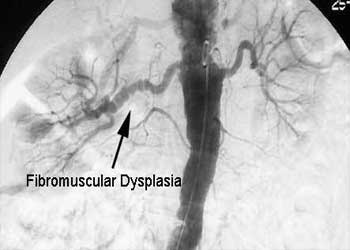- Home
- Editorial
- News
- Practice Guidelines
- Anesthesiology Guidelines
- Cancer Guidelines
- Cardiac Sciences Guidelines
- Critical Care Guidelines
- Dentistry Guidelines
- Dermatology Guidelines
- Diabetes and Endo Guidelines
- Diagnostics Guidelines
- ENT Guidelines
- Featured Practice Guidelines
- Gastroenterology Guidelines
- Geriatrics Guidelines
- Medicine Guidelines
- Nephrology Guidelines
- Neurosciences Guidelines
- Obs and Gynae Guidelines
- Ophthalmology Guidelines
- Orthopaedics Guidelines
- Paediatrics Guidelines
- Psychiatry Guidelines
- Pulmonology Guidelines
- Radiology Guidelines
- Surgery Guidelines
- Urology Guidelines
Management of fibromuscular dysplasia: First international Guideline

Working group ‘Hypertension and the Kidney’ of the European Society of Hypertension (ESH) and the Society for Vascular Medicine (SVM) have commissioned the first international consensus on the diagnosis and management of fibromuscular dysplasia (FMD). This is an update to previous consensus documents/scientific statements on FMD published in 2014 with full harmonization of the position of European and US experts.
The consensus is published in the Vascular Medicine and the Journal of Hypertension.
FMD is a nonatherosclerotic arterial disease caused by abnormal cellular proliferation and distorted architecture of the arterial wall, primarily in the renal and extracranial carotid and vertebral arteries. Clinical signs of FMD have recently been expanded to include arterial dissection, aneurysm, and tortuosity, in addition to the classical "string of beads" (multifocal) or focal arterial stenoses. Approximately 80-90% of patients with FMD are women.
Key Recommendations:
- At least one focal or multifocal arterial lesion on imaging is required to establish the diagnosis of FMD. The presence of aneurysm, dissection, or tortuosity alone is inadequate to establish the diagnosis.
- Regardless of initial site of vascular bed involvement, patients with FMD should undergo brain to pelvis imaging, at least once and usually with CTA or contrast-enhanced MRA, to identify other areas of FMD, as well as to screen for occult aneurysms and dissections.
- Treatment with antiplatelet therapy (aspirin 75-100 mg/day) is reasonable to prevent thrombotic and thromboembolic complications, in the absence of contraindication.
- A standardized consensus-based protocol for renal angiography and angioplasty is proposed, which includes hemodynamic assessment of FMD lesions using translesional pressure gradient measurements.
According to writing committee Co-Chair and SVM President, Dr. Heather Gornik, "The coming together of international experts to outline unified, consensus-based standards of clinical care for patients with FMD and an agenda to drive future research into this important but poorly understood vascular disease was our priority. We also hope that this document will provide a single go-to source for both state-of-the-art and practice information on FMD for all clinicians, whether they practice in Europe, the United States, or anywhere in the world."
For further reference follow the link: https://doi.org/10.1177/1358863X18821816

Disclaimer: This site is primarily intended for healthcare professionals. Any content/information on this website does not replace the advice of medical and/or health professionals and should not be construed as medical/diagnostic advice/endorsement or prescription. Use of this site is subject to our terms of use, privacy policy, advertisement policy. © 2020 Minerva Medical Treatment Pvt Ltd